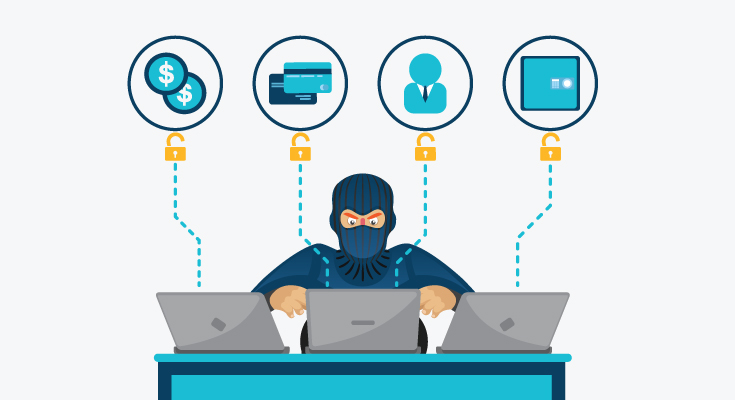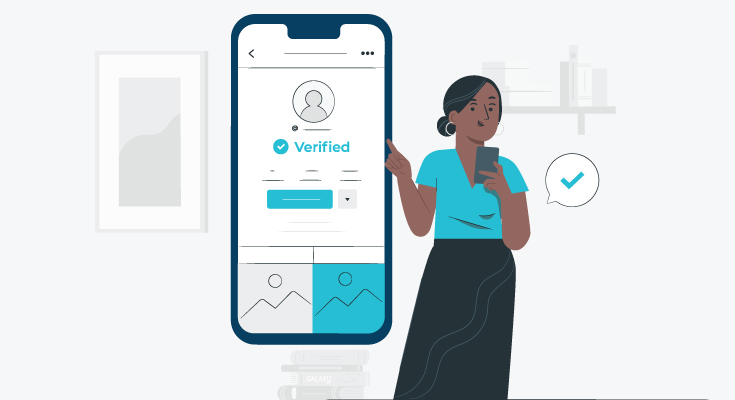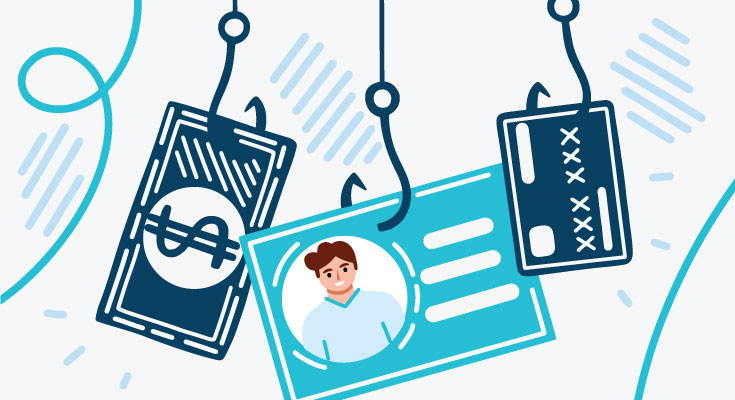Identity theft is without a doubt one of the biggest concerns for consumers. Fraudsters develop and employ new technologies that assist them. Research conducted by the Javelin Strategy & Research in 2019 showed the number of victims of identity fraud fell down to 14.4 million in 2018 as opposed to a staggering figure of 16.7 Million victims in 2017.
While the figures were lower, the financial impact of 2018’s cases of identity theft is higher. The cases of identity theft and the victim’s fraud cost reached an astonishing $1.7 billion. Slowly, the trend of fraud committed using stolen identities changed. The number of new account frauds started rising as they targeted financial accounts such as retirement accounts, checking accounts, or new accounts. With the implementation of newer technologies and sophisticated methods, fraudsters stay one step ahead of the authentication and identity verification procedures.
With the rise of digital banking, one of the most preferred target areas for identity thieves is mobile banking. The cases of mobile banking takeover reached 680,000 in 2018, which is almost double the number of cases in 2017 (380,000 cases). The use of electronic chip debit and credit cards is reducing fraud year by year. To put that in context, the credit/debit card identity theft’s financial toll 2017 was $16.8 Billion in 2017, which came down to $14.7 billion in 2018.
Identity Theft and Fraud Statistics and Reports
The Federal Trade Commission (FTC) tracks and maintains a record of all the complaints of fraud and identity theft. These records consist of complaints filed to local law enforcement, state authorities, federal authorities, or even private agencies.
Monitoring and maintaining records helps in understanding the growth or decline in types of frauds and fraud trends. In 2020, FTC received 4.8 million identity theft and fraud reports. The number grew from the total reports of 3.3 million in 2019, the rise in numbers consisted of identity theft reports.
In 2020, FTC received 1.4 million reports of identity theft as opposed to 651,000 reports in 2019. According to the FTC, 29% of all complaints received by the FTC are for identity theft. About 2.2 million complaints were fraud-related and the remaining complaints out of 4.8 million complaints were miscellaneous.
Out of all the 4.8 million reports in 2020, the reports for identity theft were the single largest fraud type based on category. The federal stimulus payments program launched by the government in the wake of the Covid-19 pandemic was one of the preferred target areas for criminals. The next biggest type of identity theft was “new credit card account” fraud. The second worst type of identity theft fraud according to FTC was impostor scams with almost half a million reports.
Out of the 2.2 million fraud-related cases, 34% of reports consisted of financial harm. In 2020, customers reported a total financial loss of around $3.3 Billion which grew from $1.5 Billion in 2019.
Identity Theft Report: 2020
In the last five years, the figures surrounding a variety of frauds have been growing constantly, regardless of the counter strategies implemented by government and private sectors. Here are the top 5 types of identity theft.
| Types of Identity Theft | Number of Complaints | Percentage of Total Fraud |
| Government benefits applied or received | 394,324 | 32.0% |
| Credit card fraud-new account | 365,597 | 29.7% |
| Miscellaneous ID theft | 281,434 | 22.9% |
| Business/personal loan | 99,667 | 8.1% |
| Tax fraud | 89,391 | 7.3% |
| Total Figures | 1,230,413 | 100% |
What Is Cybercrime?
As businesses switch to electronic data management and remote working for their day-to-day operations, millions of rows of data are being stored online. This can lead to certain privacy risks, and cause huge financial losses to both businesses and the consumer in case a data breach happens.
Cybercrimes like extreme data breaches still remain a huge risk for businesses. In January 2021, more than 250 million Microsoft customer details were left unprotected online. In March 2021, the U.S. cybersecurity department launched a set of guidelines that all organizations across all industries should follow in regard to Microsoft’s server weak points. A prediction states that more than 30,000 US-based organizations will be affected if the guidelines are not followed.
Similarly, a breach at Marriott Hotels in 2020 led to the exposure of more than 5 million customer data. MGM Resorts’ data breach in February 2020 exposed the personal information of more than 10 million customers. By the end of 2020, cybercriminals had breached more than 18,000 government agencies using new and undetectable technologies. The government agency breach went on for months without detection until the software program used by government agencies was updated. The information targeted during that breach was confidential corporate information instead of customer data.
One of the most significant data breaches of the last 5 years happened with Equifax Inc. The organization suffered a breach that exposed financial data and social security numbers of more than 145 million people. According to the reports, it was one of the worst breaches as a lot of sensitive data was exposed and stolen.
Despite all the countermeasures, the cost associated with cybercrimes is rising annually. A joint report by McAfee and the Center for Strategic and International Studies (CSIS) estimated the annual cost of cybercrime to the global economy is $445 Billion per year.
The average cost of data breaches globally in 2018 was $13 million, which rose from $11.7 million in 2017. To tackle the slowly growing costs, cyber insurance is necessary. Cyber insurance became a mainstream product in the United States in the late 1990s. In 2017, 505 insurers wrote cyber insurance and 545 cyber insurance providers in 2018. Direct premiums from this insurance reached a total of $2 billion from companies that can report premiums for stand-alone and coverage provided as part of the whole insurance package. The same figure in 2017 was just $1.86 billion, this goes to show that more and more people are becoming aware of cybercrimes and insuring themselves against them.
Cybercrime Reports: State and Insurance Premiums Based
As mentioned, the scale of cybercrime is heading upwards annually, resulting in more losses each year. Here’s a proper breakdown of the statistics.
Top 10 States with Cybercrime Victims 2020
| State | Cybercrime Victims |
| California | 69,541 |
| Florida | 53,793 |
| Texas | 38,640 |
| New York | 34,505 |
| Illinois | 20,185 |
| Pennsylvania | 18,636 |
| Washington | 17,229 |
| Nevada | 16,110 |
| New Jersey | 14,829 |
| Maryland | 14,804 |
Top 10 States with Cybercrime Losses 2020
| State | Losses (Millions) |
| California | $621.5 |
| New York | $415.8 |
| Texas | $313.6 |
| Florida | $295.0 |
| Ohio | $170.2 |
| Illinois | $150.5 |
| Missouri | $115.9 |
| Pennsylvania | $108.7 |
| Virginia | $101.7 |
| Colorado | $100.7 |














